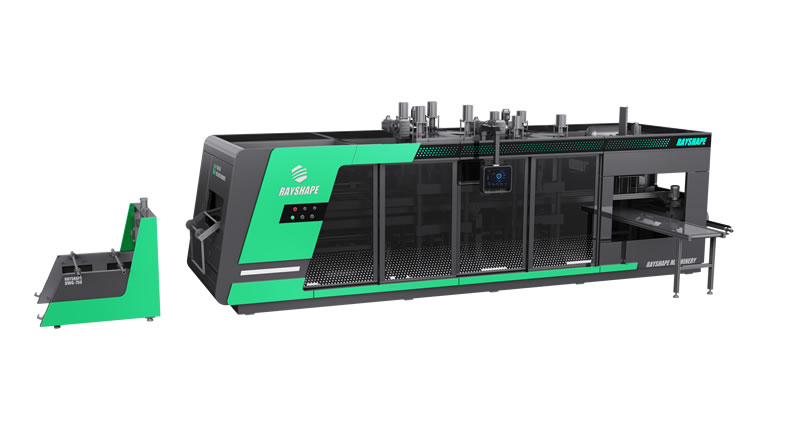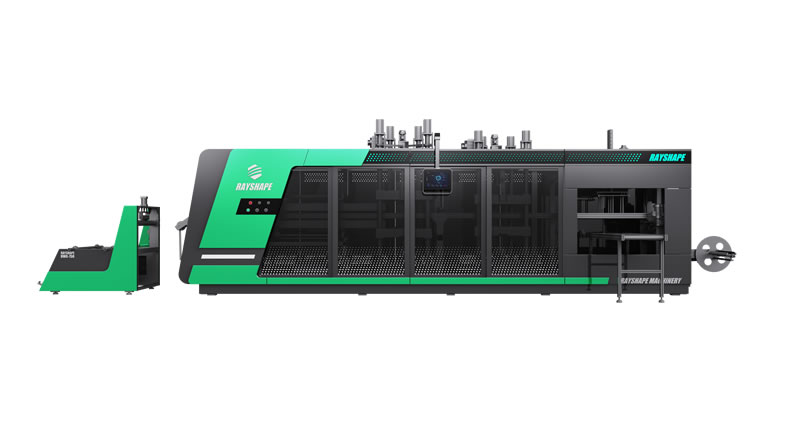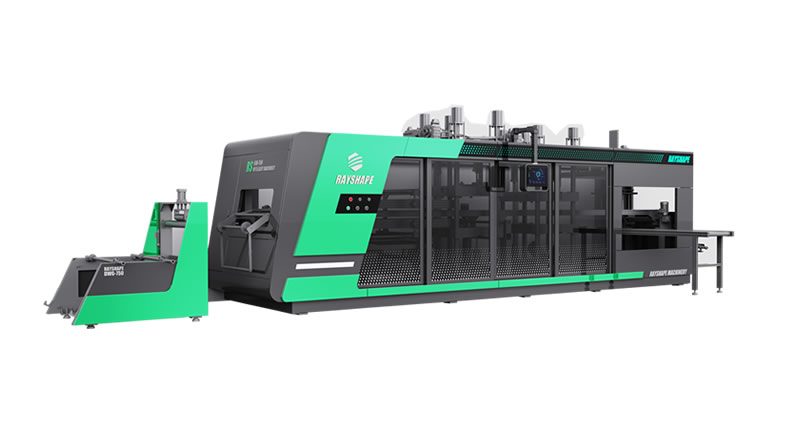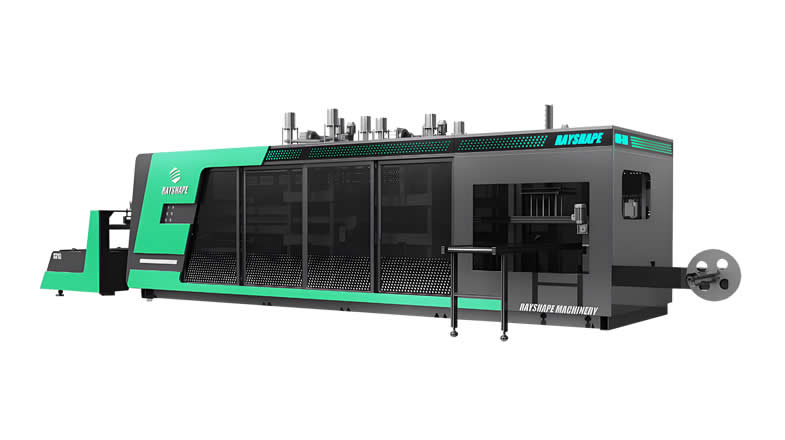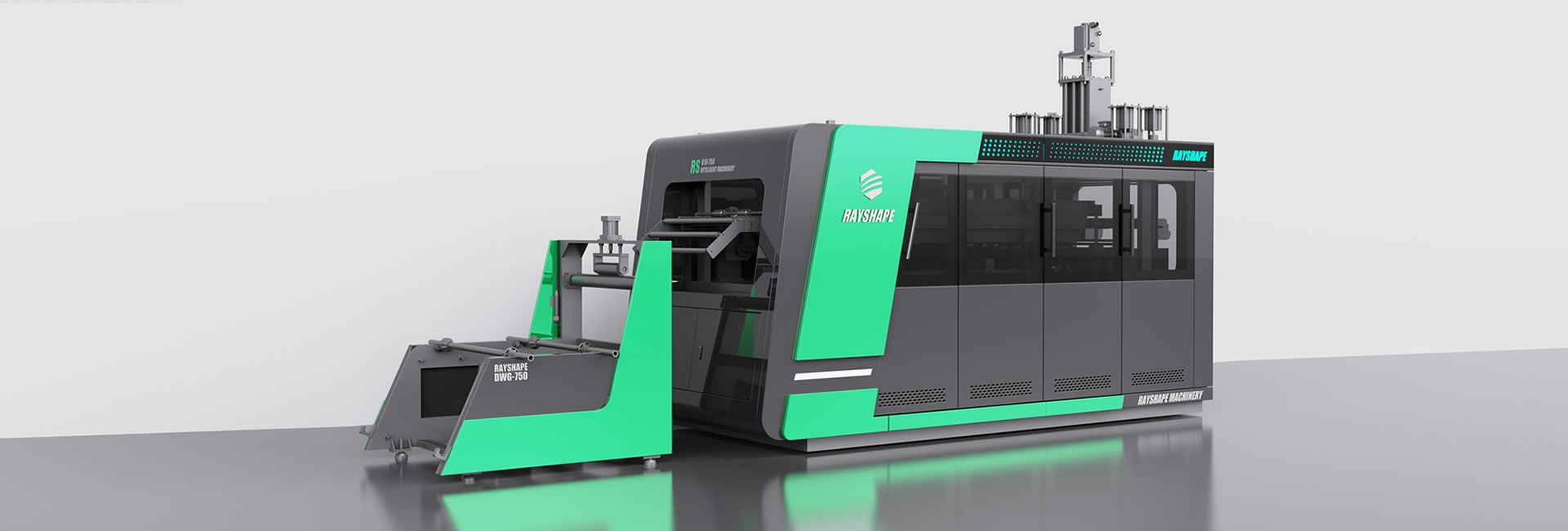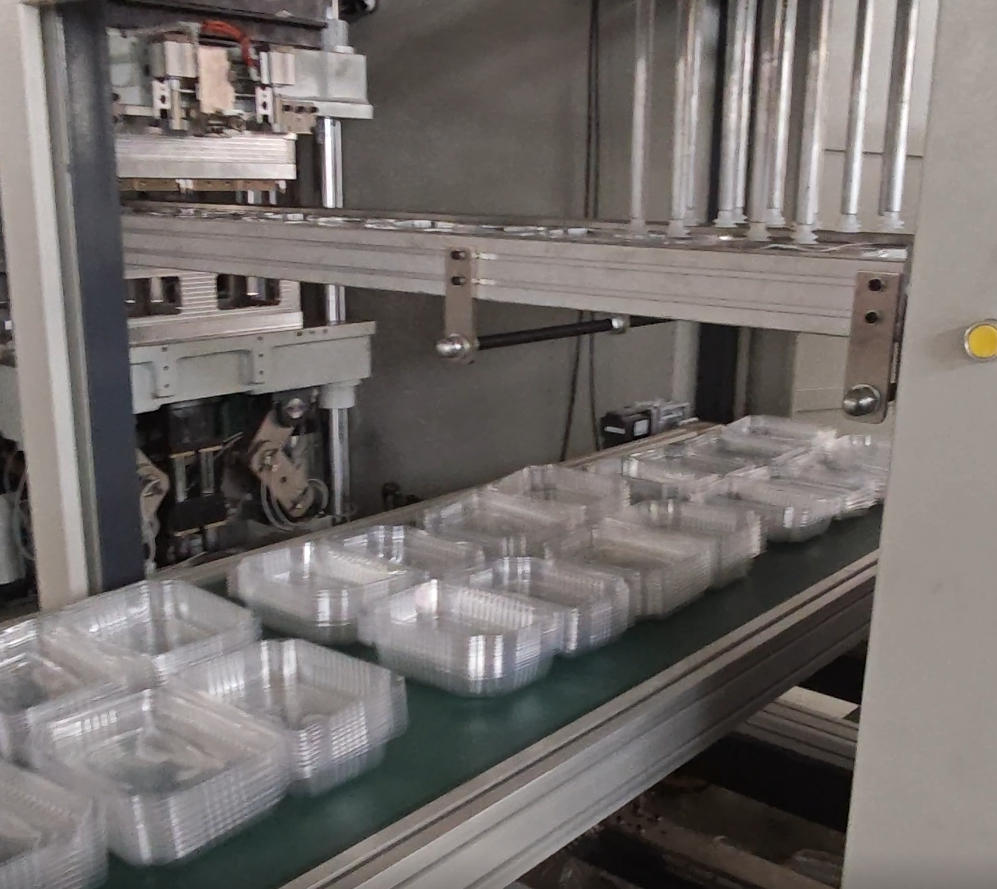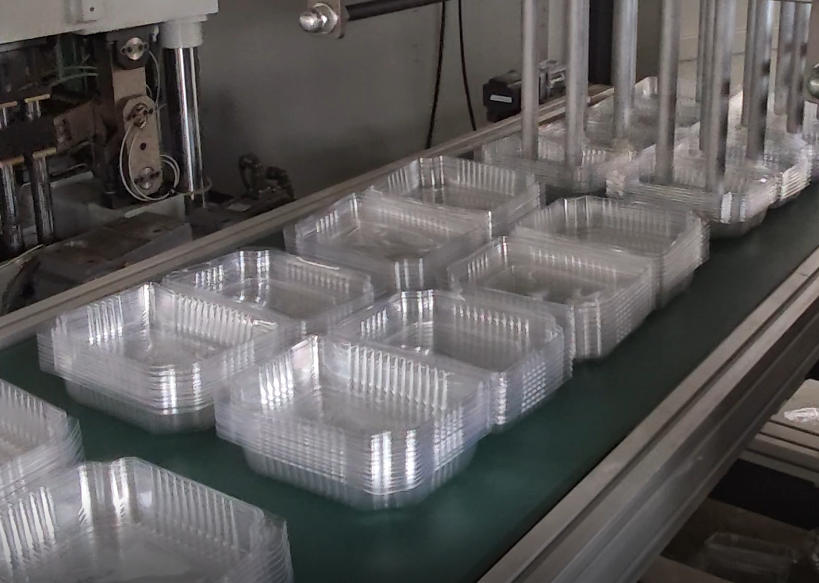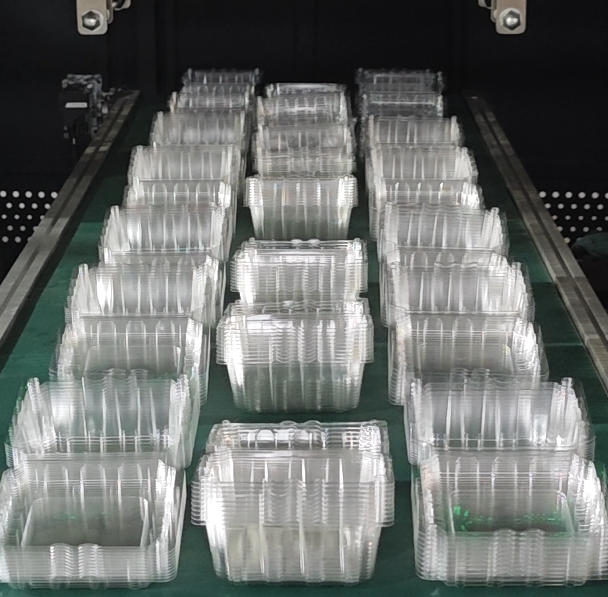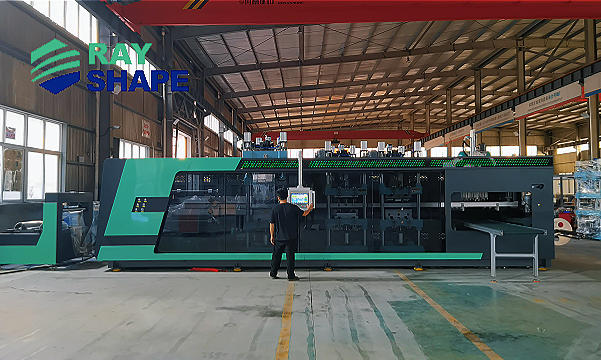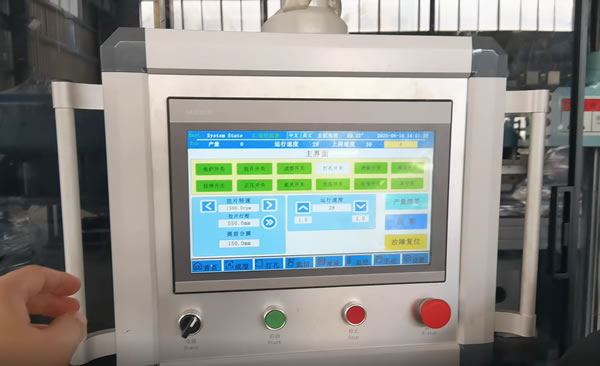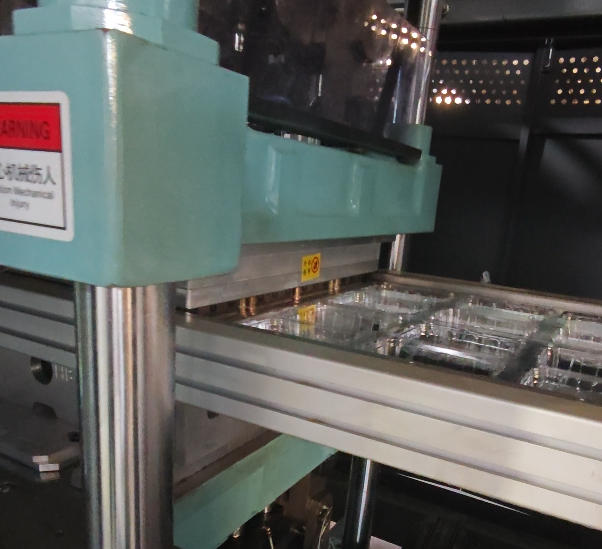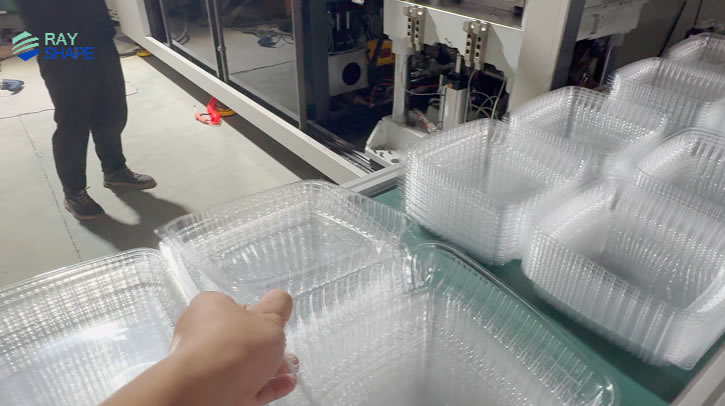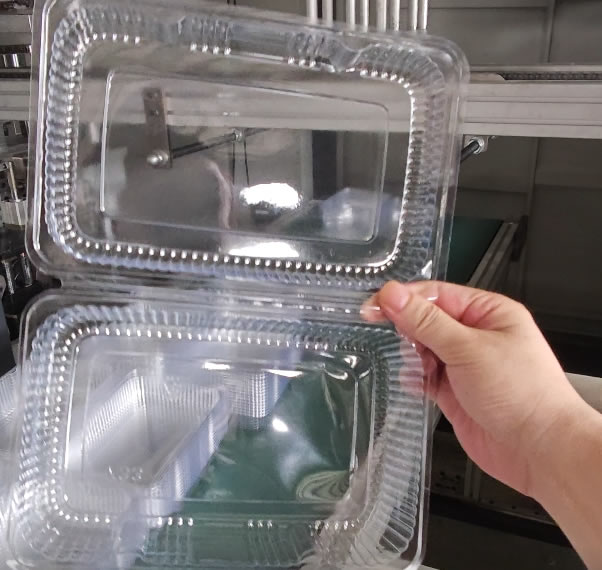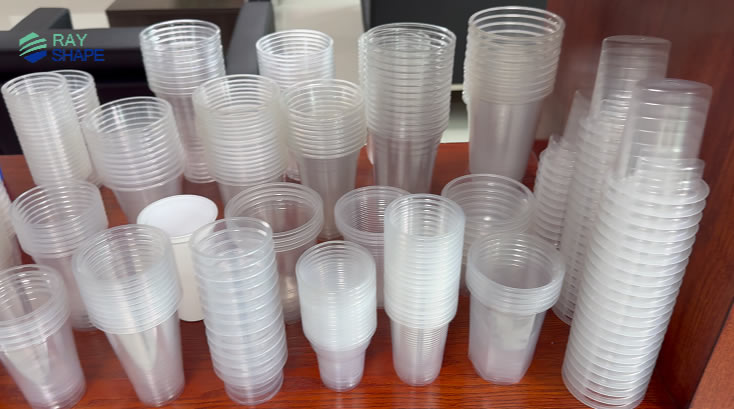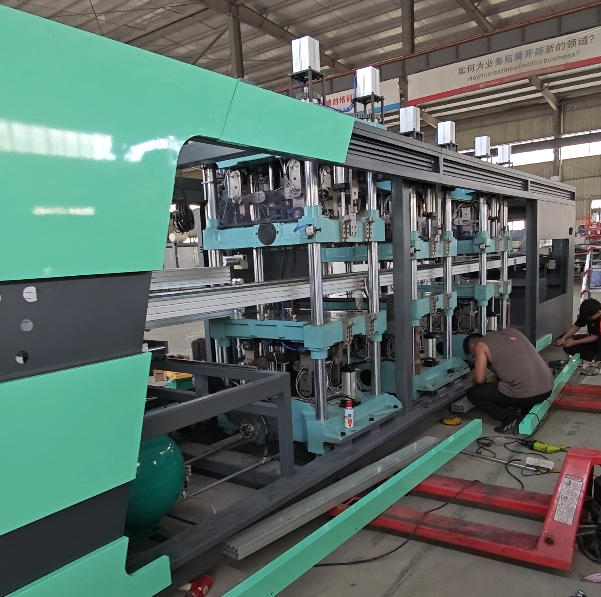Thermoforming Machine
Three-Station Plastic Thermoforming Machine
Four-Station Plastic Thermoforming Machine
Four-Station Plastic Thermoforming Machine
Rayshape Plastic Thermoforming Machine
Before we delve into the machines themselves, it is important to understand the thermoforming process. Thermoforming is a manufacturing process that heats a plastic sheet to a pliable temperature, forms it into a specific shape in a mold, and then trims it to create a usable product. Unlike injection molding, which involves melting the plastic and injecting it into a mold, thermoforming uses pre-extruded plastic sheets. This distinction is critical because it affects the types of products that can be manufactured, the cost of the mold, and the overall efficiency of production.
Core Principle: Heating, Forming, Trimming
The basic principle of a plastic thermoforming machine is relatively simple: controlled application of heat, followed by forming, and finally precise trimming.
Heating: The plastic sheet is heated to its softening point. This is usually achieved with radiant heaters, although other methods such as forced hot air or contact heating can also be used. The goal is to reach a temperature that makes the plastic pliable enough to be formed without degrading its properties.
Forming: Once softened, the heated plastic sheet is brought into contact with the mold. A vacuum is then applied to draw the softened plastic tightly against the mold surface, or air pressure is used to push it into the mold cavity. This creates the desired three-dimensional shape. Some advanced machines also use plugs to pre-stretch the plastic, ensuring a more uniform wall thickness, especially for deep-draw parts.
Trimming: After the plastic has cooled and retained its shape, the formed part is removed from the mold. The excess material (often called "offcuts" or "flash") is then trimmed away to give the final product. Trimming can be performed in-line (inside the machine) or off-line, using a variety of methods such as die cutting, laser cutting, or CNC milling.
Types of Plastic Thermoforming Machines Plastic thermoforming machines come in a variety of configurations, each suited to different production volumes, part complexities, and material types. The main categories include:
1. Vacuum Forming Machines
This is the most basic and common type of thermoforming machine. They work by creating a vacuum between the heated plastic sheet and the mold, pulling the plastic into the mold cavity. Vacuum forming is suitable for parts with simpler geometries and is often used for prototyping, small batch production, and applications where dimensional accuracy is not required.
2. Positive Pressure Forming Machines
[Positive Pressure Forming Machine Image]
Wenzhou Ruisu Machinery Co., Ltd. specializes in the development and production of high-quality equipment, including positive and negative pressure plastic thermoforming machines. Positive pressure forming machines use air pressure to press heated plastic sheets into molds. This method has several advantages over vacuum forming, including better detail reproduction, sharper edges, and the ability to form thicker materials. Higher pressure ensures that the plastic fits the mold contours more accurately, producing parts with better aesthetics and tighter tolerances. Positive pressure forming is often used for housings, medical device components, and other applications that require a higher surface finish.
3. Twin-sheet Forming Machines
Twin-sheet thermoforming is a special process that involves heating two plastic sheets simultaneously and then forming them together in a single mold. As the sheets are formed, they fuse at the edges to form a hollow, double-walled part. This technology is ideal for producing lightweight but strong components with features inside, such as air ducts, automotive panels, and various containers.
4. Rotary Thermoformers
Rotary thermoformers are designed for high-volume production. They typically have multiple stations (e.g., heating, forming, cooling, trimming) arranged on a rotating indexing table. As the table rotates, each station performs its specific function, resulting in continuous and rapid production of parts. These machines are highly automated and are often used for packaging, disposable cups, and other mass-produced items.
5. In-line Thermoformers
In-line thermoformers integrate the entire process—from extruding plastic sheets to forming and trimming—into a single, continuous line. This setup is very efficient for extremely high-volume production, especially for thin-gauge products such as food packaging trays and disposable containers. The material flows directly from the extruder to the thermoforming station, minimizing handling and maximizing production output. Wenzhou Ruisu Machinery also manufactures plastic sheet extrusion lines and plastic coil forming machines, which complement the integrated concept of in-line thermoforming machines and demonstrate the company's expertise across the entire production chain.
Key Components of Thermoforming Machines
Although different types of machines vary in design, most plastic thermoforming machines share several core components:
Heating System: Usually consists of ceramic or quartz heaters arranged above and/or below the clamping frame. The heating system must provide uniform and precise temperature control to ensure consistent flexibility of the plastic.
Clamping System: The clamping system firmly holds the plastic sheet during the heating and forming process. It must apply enough force to prevent the sheet from slipping or deforming.
Forming Station: This is where the mold is located and where vacuum or pressure is applied to give the plastic shape.
Mold: The mold is a key component that defines the final part shape. Depending on the production volume and the material to be molded, the mold can be made of a variety of materials, including aluminum, steel, wood and even epoxy.
Vacuum/Pressure System: This includes vacuum pumps, air compressors, and control valves to regulate differential pressure during the forming process.
Cooling System: After forming, the plastic needs to be cooled quickly to fix its shape and prevent deformation. This is usually achieved by fans, water mist, or cold plates.
Finishing System: This can range from a manual trimming station to an automated die cutter, robotic trimmer, or CNC milling machine.
Control System: Modern thermoforming machines are equipped with advanced PLC (Programmable Logic Controller) or PC-based control systems. These systems allow operators to precisely control heating parameters, cycle time, pressure, and other key variables, ensuring consistent part quality and optimizing production efficiency.
Materials Used in Thermoforming
A wide variety of thermoplastics can be thermoformed, each with unique properties suitable for different applications. Common materials include:
A-PET, R-PET, C-PET (Polyethylene Terephthalate): Widely used in food packaging, beverage bottles, and blister packaging, known for its clarity, strength, and barrier properties.
BOPS (Biaxially Oriented Polystyrene): Highly transparent and rigid, it is often used in food containers and packaging.
HIPS (High Impact Polystyrene): A strong and economical material, it is often used in disposable cups, trays, and catering supplies.
PP (Polypropylene): Known for its excellent chemical resistance, heat resistance, and flexibility, it is suitable for automotive parts, containers, and medical devices.
PLA (Polylactic Acid): A biodegradable plastic that is gaining attention for sustainable packaging and disposables.
PVC (Polyvinyl Chloride): Used in blister packaging, medical trays, and other applications that require good transparency and chemical resistance.
Wenzhou Rayshape Machinery Co., Ltd. produces machines that are compatible with this wide range of materials, including A-PET, R-PET, C-PET, BOPS, HIPS, PP, PLA, and PVC, allowing the production of a wide range of plastic finished products.
Applications of Plastic Thermoforming Machines
The versatility of plastic thermoforming machines has led to their widespread use in a wide range of industries. Some of the main applications include:
Packaging: This is probably the largest application area, covering everything from food trays, blister packs and clamshell packaging to disposable cups and containers.
Automotive: Interior trims, door panels, dashboard components, air ducts and bumper covers are often produced using thermoforming.
Medical: Medical trays, device housings, sterile packaging and prosthetic components are often produced by thermoforming because of the need for precise shapes and a sterile environment.
Consumer Products: Appliance housings, toys, sporting goods components and a variety of household items are manufactured by thermoforming.
Architectural: Skylights, bathtubs, shower enclosures and some building components can be thermoformed.
Signs and Displays: Point-of-sale displays, illuminated signage and exhibition stand components benefit from the ability to create complex shapes.
Aerospace: Interior panels, luggage and certain structural components can be thermoformed, especially for lightweight applications.
Advantages of Thermoforming
Plastic thermoforming offers several compelling advantages over other plastic manufacturing processes:
Lower tooling costs: Thermoforming tooling is generally less expensive to design and build than injection molding, making it a more cost-effective option for low- to medium-volume production.
Faster prototyping: Relatively fast and inexpensive tooling production allows for rapid prototyping and design iterations.
Design flexibility: Thermoforming can accommodate complex geometries, undercuts (with certain limitations), and textured surfaces.
Material diversity: A wide range of thermoplastic materials can be processed, providing different properties for a variety of applications.
Part size: Thermoforming can produce very large plastic parts that would be impractical or impossible with other methods.
Reduce material waste: In some thermoforming processes, particularly those with in-line trimming, scrap material can be reground and reused, contributing to sustainability.
Quick tool changeover: Modern thermoforming machines often feature quick tool changeovers, reducing downtime between different product runs.
Challenges and considerations
Despite its many advantages, thermoforming also presents some challenges and considerations:
Wall thickness variation: It is difficult to maintain uniform wall thickness, especially in deep-drawn parts or parts with sharp corners. Advanced technologies, such as plug-assisted molding and positive pressure molding, help alleviate this problem.
Limited part complexity (compared to injection molding): Although flexible, thermoforming generally cannot achieve the same level of intricate details or complex internal features as injection molding.
Material limitations: Only thermoplastics can be thermoformed; thermosets are not suitable for this process.
Waste: Although recyclable, the trimming process does generate waste that needs to be managed.
Molding limitations: Creating parts with undercuts or highly complex internal geometries can be difficult or require multi-piece molds.
Plastic Thermoforming Machine - PDF
Pursuing excellence and shaping the future
Wenzhou Rayshape Machinery Co., Ltd., a subsidiary of Elemotion Group, is located at No. 19, East Section, Pinghai Avenue, Binhai New District, Pingyang County, Wenzhou, a beautiful coastal city. This is a manufacturing enterprise integrating mechanical and software R&D, production, marketing and after-sales service.
The company was officially renamed Wenzhou Rayshape Machinery Co., Ltd. in 2025 and is wholly owned by Wenzhou Elemotion Holdings, which marks a new stage in the company's development. Wenzhou Rayshape Machinery Co., Ltd. has an experienced R&D team, strong operational and after-sales service capabilities, and a solid financial foundation. The company is committed to developing and producing high-end, energy-saving, and highly automated equipment, including positive and negative pressure plastic thermoforming machines, plastic sheet extrusion lines, and plastic coil forming machines.
The company has inherited the spirit of diligence and continuous improvement of the Elemotion Group and constantly pursues excellence in self-transcendence. Wenzhou Rayshape Machinery Co., Ltd. actively embraces innovation, has successfully developed high-quality automated equipment, and is committed to learning Elemotion's path to becoming an industry-leading company. Through unremitting efforts and commitment to technological innovation, Wenzhou Ruisu Machinery is contributing to the future of the global plastics manufacturing industry.

Thermoforming Machine Video
Thermoforming Machine News

Unveiling the Power of Automatic Plastic Thermoforming Machines by Rayshape
In the fast-paced world of plastic manufacturing, where efficiency, precision, and sustainability are paramount, the advent of automated technologies has redefined production capabilities. At the f...

China Thermoforming Machines by Wenzhou Rayshape
The landscape of global manufacturing has been transformed by China's rise as a hub for innovation and advanced technology. In the specialized field of plastic processing, the China Thermoforming Mach...

Efficient Operation of a Blister Forming Machine
A blister forming machine excels in producing airtight packaging for tablets, capsules, or small consumer items. It works by heating a plastic sheet, forming it into cavities (blisters) using vacuum s...

Multi-Station Thermoforming Machine by Wenzhou Rayshape Machinery Co., Ltd.
Company Overview Wenzhou Rayshape Machinery Co., Ltd., a subsidiary of Elemotion Group, is located at No. 19, East Section of Pinghai Avenue, Binhai New Area, Pingyang County, Wenzhou, Zhej...

Automatic Multi-station Thermoforming by Rayshape
Automatic Multi-station Thermoforming by Rayshape In high-volume manufacturing, efficiency is everything. The Automatic Multi-station Thermoforming Machine represents the pinnacle of this ...

Revolutionizing High-Volume Manufacturing: Rayshape Multi-Station Thermoforming Machines
In the fast-paced plastics industry, where efficiency and scalability are critical, multi-station thermoforming machines are transforming high-volume production. Wenzhou Rayshape Machinery Co., Ltd...

RAYSHAPE Fully Automatic Plastic Thermoforming Machine: Remote Control, Leading the Future
In modern industrial production, efficiency and stability are the keys to success. RAYSHAPE’s fully automatic plastic thermoforming machine redefines the standard of intelligent manufacturing with its...

RAYSHAPE Automatic Plastic Thermoforming Machine Upgrade Announcement
RAYSHAPE specializes in the development and production of fully automatic plastic thermoforming machines, dedicated to providing efficient and precise thermoforming solutions. To further enhan...

Plastic the world, create unlimited! Ruisu thermoforming equipment is widely used
Core equipment: Fully automatic thermoforming machine, multi-station machine, capping machine, multi-function machine to meet diversified molding needs. Source support: RS series single/double-layer,...

Shaping the Future with Precision: Plastic Thermoforming Machines by Rayshape
Precision in Plastic: Wenzhou Rayshape’s Thermoforming Machines Wenzhou Rayshape Machinery Co., Ltd. leads the plastic manufacturing industry with advanced plastic thermoforming machines, transformin...

The core technology principle of plastic thermoforming machine
1. Core technical principles and system composition of plastic thermoforming machines Plastic thermoforming machines achieve plastic deformation of polymer sheets by precisely controlling ther...

The Power of Precision in a Compact Design: Wenzhou Rayshape’s Small Thermoforming Machines
The Power of Precision in a Compact Design: Wenzhou Rayshape’s Small Thermoforming Machines In a world where manufacturing efficiency is key, not every operation requires a large-scale production lin...

ermoforming Machine Engineering Advancements
Modern thermoforming machines represent the pinnacle of industrial efficiency with servo-electric drive systems reducing energy consumption by 35% compared to hydraulic alternatives. These sophisticat...

The Ultimate in Efficiency: Rayshape Three-Station Thermoforming Machine for Fruit Trays
The Ultimate in Efficiency: Rayshape's Three-Station Thermoforming Machine for Fruit Trays In the highly competitive food packaging industry, speed, hygiene, and precision are non-negotiable. For m...

The Freshness Advantage: Rayshape Fruit Box Making Machine
In the competitive fresh produce industry, the quality of packaging is as crucial as the fruit inside. It must protect, present, and preserve. This is where a specialized fruit box making machine b...

How Positive and Negative Pressure Forming Enhances Precision
Positive and negative pressure forming is a dual-force technique that improves mold accuracy in thermoforming by applying air pressure from above and vacuum suction from below. This method creates int...

china thermoforming machine price
In the dynamic world of manufacturing, a reliable thermoforming machine is the backbone of production for countless plastic products, from consumer goods to medical supplies. While the market offers v...

Professional automatic thermoforming machine manufacturer
Wenzhou Ruisu Machinery Co., Ltd. is not only an equipment manufacturer, but also a trusted smart manufacturing partner and solid backing for global customers, sending precision machinery from Pingyan...
 language
language
 English
English
 Русский
Русский
 España
España
 Français
Français
 عربي
عربي
 中文版
中文版
